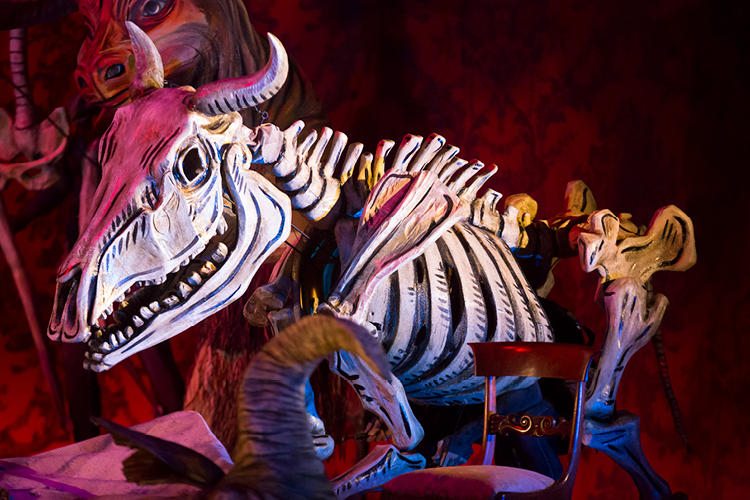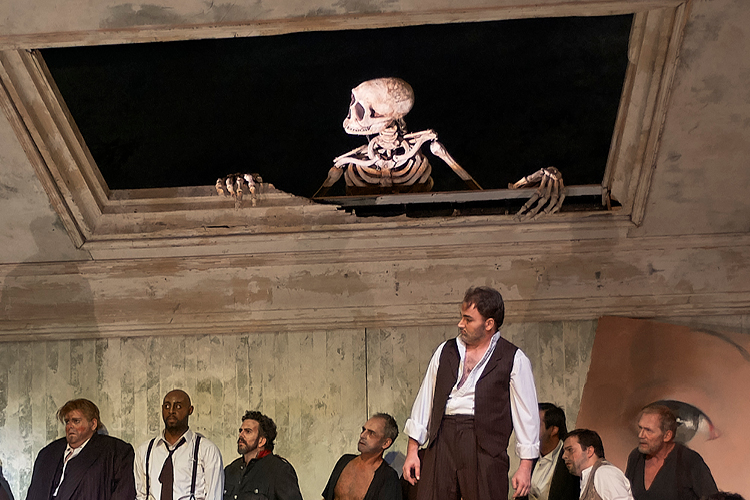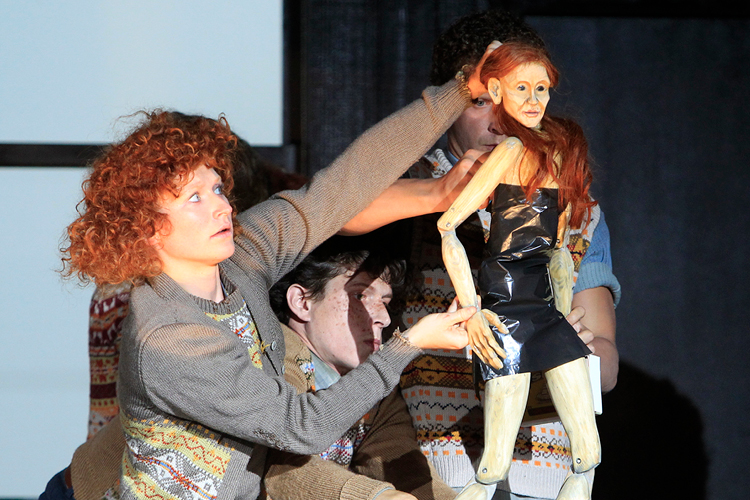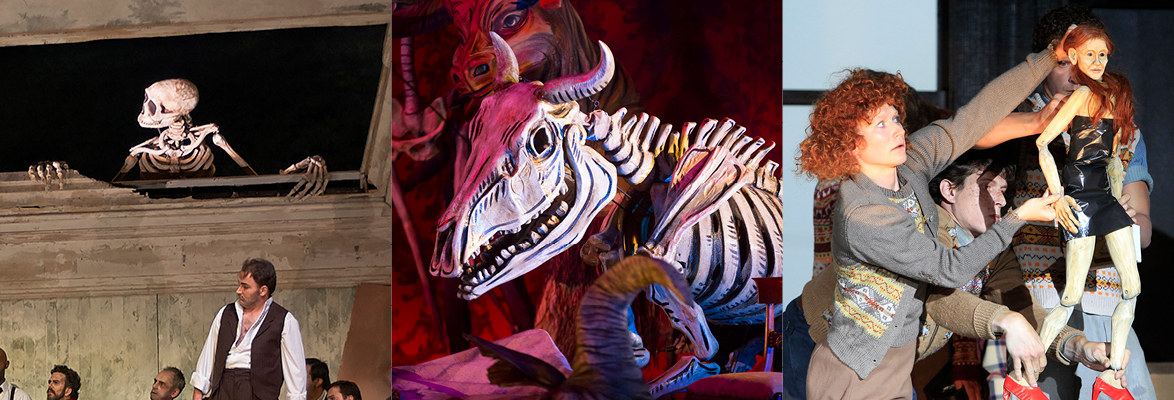April 22, 2019
The Art of Puppetry in Opera
Across the world, opera companies are reviving an ancient art form into the performance of opera: puppets. With the first known use of puppets as a theatrical component in ancient Greece, the use of creating life and telling a story through inanimate objects has spanned thousands of years. The recent revival of Satyagraha by Philip Glass at LA Opera in 2018 featured towering puppets who appeared onstage amidst the action, and in our upcoming production of Ariodante, the puppets are used to reenact the plot unfolding onstage.
Closing out our 2018/19 opera season is Ariodante, by George Frideric Handel, an opera seria in three acts with seven leading roles and storylines that interweave to create layers of relationships within the characters. This production of the Festival d’Aix-en-Provence, in our coproduction with Dutch National Opera and Canadian Opera company, utilizes puppets during orchestral music to reiterate the story being told. The use of puppets in the upcoming performances serves symbolically for characters onstage and how the story is unfolding. We talked with Lyric Opera of Chicago’s properties and scenic art director Maria DeFabo Akin to learn more about puppetry and what is important when incorporating puppets and opera.

Maria explained to us that puppetry has two facets with opera, the creation and design of the puppet, and the performance. “The director of a production generally comes up with the idea to use puppetry in the show, sometimes with the help of the other designers. Often at this point they will engage the help of a puppetry designer and director, which can be the same person or different people.” After the puppets are realized and created, the next step is to implement them into the performance of the opera, which presents additional steps for the puppeteers. Maria goes on to explain that puppetry is similar to acting, as you bring the puppet to life. “You can say our great singers here at Lyric fight to die in the great arias - but the puppets have to fight to live. Singers practice dying. The puppet has to practice living. One way to do this is through breath. The breath can tell the audience a lot about the emotion of the puppet. Changing the rhythm can tell us it the puppet is relaxed or distressed.”

She also explains that there can indeed be too much movement, distracting and drawing unwanted attention. It is the director’s job then, to envision the whole stage picture so that the audience’s attention is always on the intended subject. The puppeteer must also maintain focus with the puppet and action. Maria noted that if the puppeteer also looks into the audience, there can be a conflict of focus. “ Many puppeteers use a three stage focus technique where the puppeteer sees something, then the puppet sees the thing, then the puppeteers focus goes back to the puppet.” While different puppeteers have their own techniques, the right skill will have it come together seamlessly.

Come see for yourself how the puppets in Ariodante transform this production and heighten the experience of living, breathing, art!

